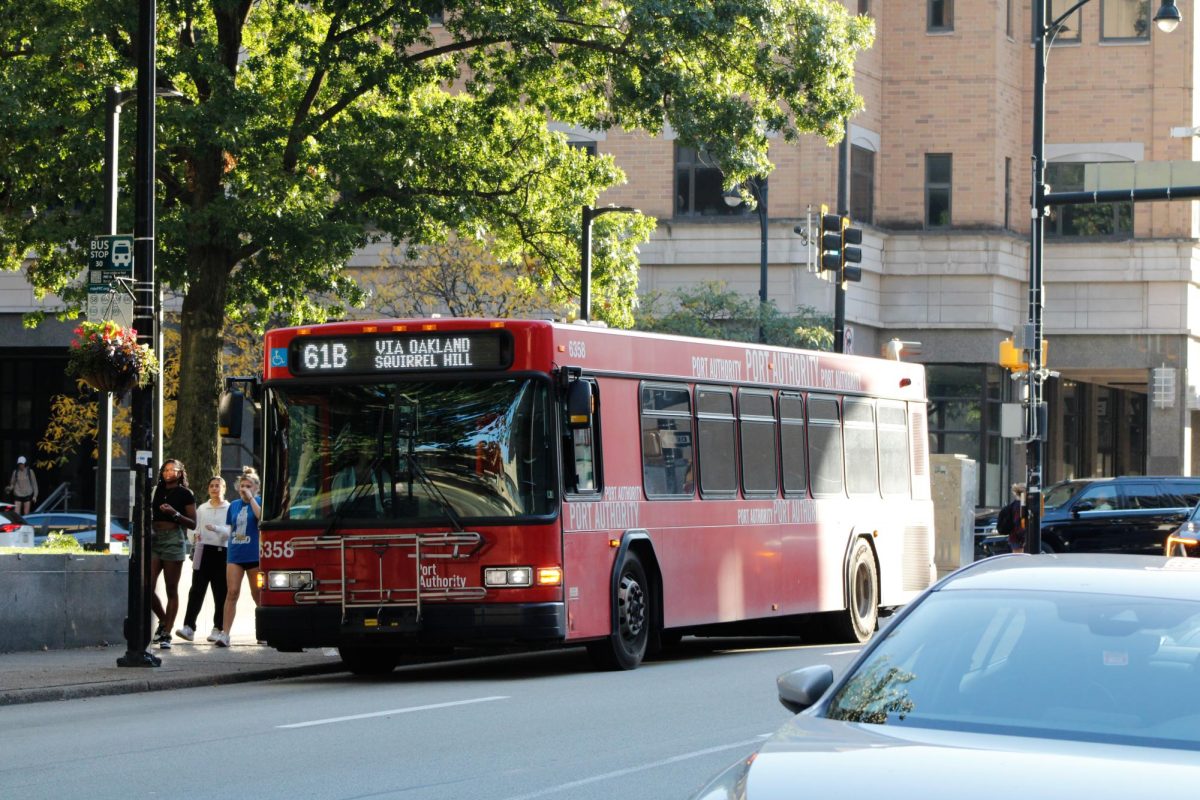PRT announced the first draft of its new proposed Bus Line Redesign at the end of September. The changes, which include renaming lines and reducing the total number of routes, aim at increasing the frequency of service and will most likely be implemented in 2026.
Adam Brandolph, chief deputy communications officer for Pittsburgh Regional Transit (PRT), said the newly proposed Bus Line Redesign will make Oakland a “major transit hub.”
“The redesign will expand direct access from Oakland to other parts of the city and the county,” Brandolph said. “We want to make sure that students in Oakland have access to grocery stores and places that students go. Oakland is a huge job center, so we want to make sure people who live in other communities are able to get to Oakland.”
Under the proposed changes, any bus that ends Downtown will have a D in the name, buses that end in Oakland will have an O in the name and bus lines that span multiple neighborhoods will be named with an N or an X.
Brandolph said that this proposed plan will reduce the total number of routes from 95 to 77, but added that PRT will “maintain 99.4% of coverage that we have.”
“We are able to do more with fewer routes,” Brandolph said. “An individual route may extend a mile or two into areas where they don’t currently serve but will continue to provide access to the same neighborhoods.”
PRT is collecting feedback from riders until Jan. 31, 2025. Riders can fill out a survey online or attend a pop-up event around the county.
According to PRT’s website, the goal of this project is to better fit the needs of PRT users. Brandolph added that PRT’s services have been long overdue for a redesign.
“We haven’t had a major network redesign in a decade, and Allegheny County has really changed a lot over the last decade,” Brandolph said. “We change our service incrementally, every three months or so, but it’s really, really small, and we haven’t had the opportunity to really make our system better in 10 years.”
Jonathan Barnes, a sophomore mechanical engineering major, said he commutes from outside of the city limits and feels that bus services could be more frequent.
“Late last year, they cut the amount of buses that went downtown. It used to be all 61s and 71s went all the way downtown,” Barnes said. “It cut the amount of buses that roll through there in half, which I think they were trying to do, but it didn’t solve any problems.”
Abby Mirot, a junior English literature and digital narrative and interactive design major, said she is excited for some of these changes because she thinks it will reduce crowding in the morning.
“I think the new equivalents of the 71A and 71C will be combined,” Mirot said. “They are also going to run around every 15 minutes, so hopefully it won’t be as crowded on the morning trips to class.”
Mirot said she is “pretty satisfied” with the current service she gets while she commutes from another city neighborhood.
“I have to leave pretty early to make sure I’m on time to class, but I have never been royally screwed over,” Mirot said. “I get hopeful every time that one of these bus line changes happen that Downtown will be less of a nightmare to get out of. I also am really glad that the new airport bus [route] is coming down my street.”
One new route that Pitt students might see on campus in the future is the D70, which begins at Wilkinsburg Station, goes through campus and ends Downtown. The 71D will be modified to become the D73 and end downtown. Many of the buses that travel down main roads like Centre Avenue and Fifth Avenue, along with other popular routes, will run every 15 minutes during peak travel times. Currently, most buses run every 20 or 30 minutes, even during rush hour.
Mirot added that she feels changing the names of bus routes is “unnecessarily confusing” since many of her preferred bus routes are staying largely the same.
“I think eventually once everyone gets used to it having the O for Oakland, it will help people understand where they’re going easier,” Mirot said.
While some students report mixed feelings about the changes, Brandolph said PRT is trying to take everyone’s feedback into account.
“We’re not going to make everybody happy — we know that — but we’re trying to make as many people happy as possible,” Brandolph said.


